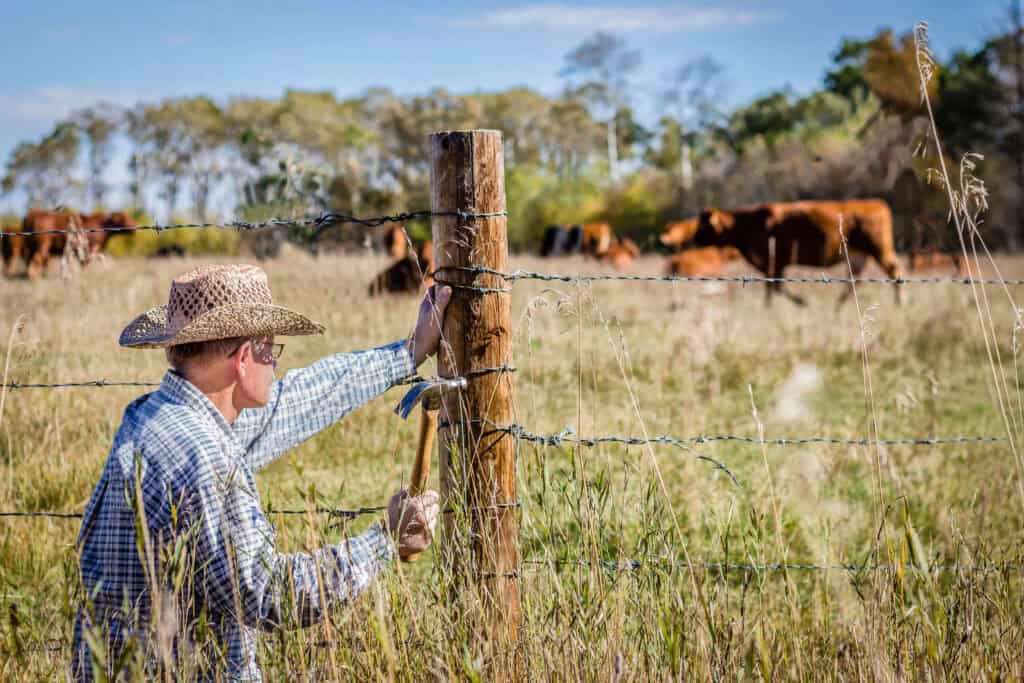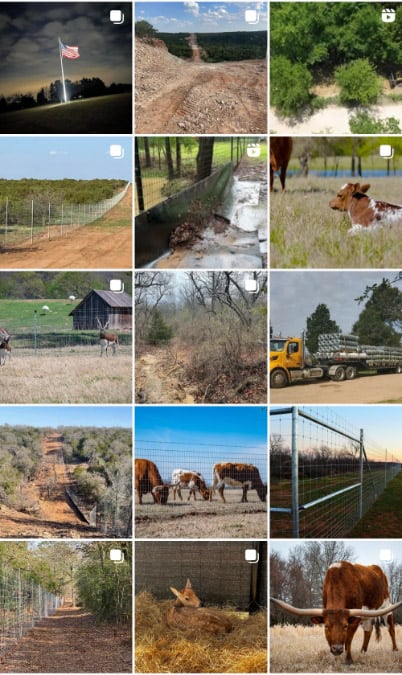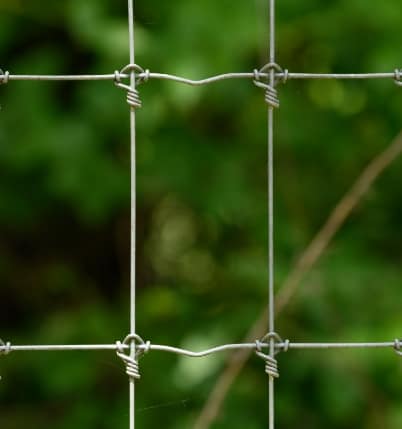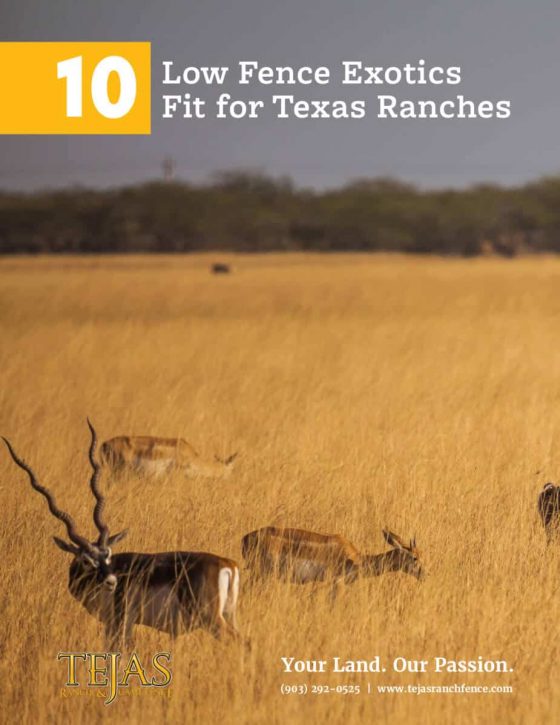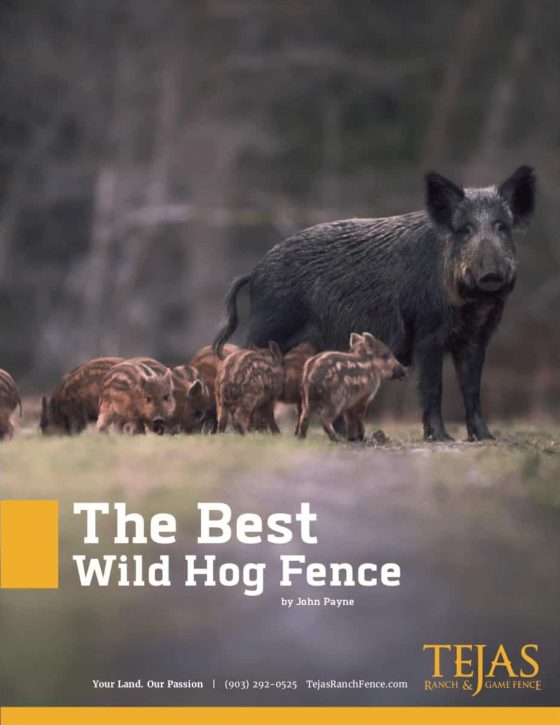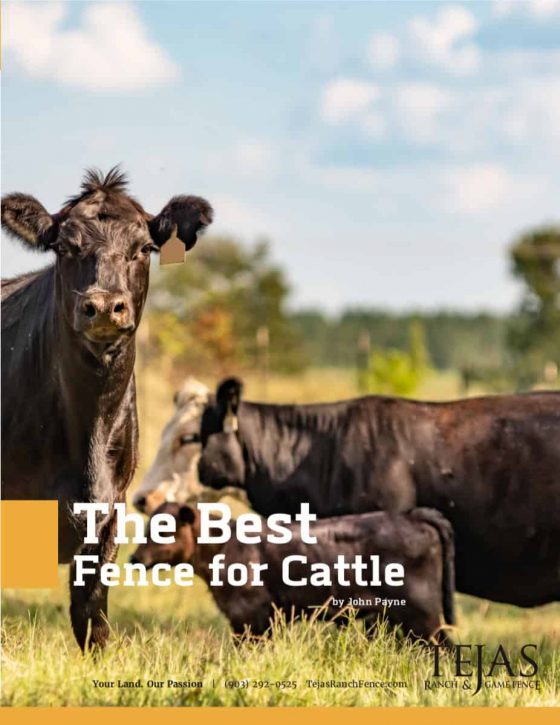The history of cattle fencing in the United States dates back to the mid-19th century and is deeply intertwined with the development of agriculture and ranching. Tejas Ranch & Game Fence owner John Payne is a fifth-generation Texan. He has heard family stories of his ancestors going to Mexico and bringing a thousand sheep back to West Texas, running a successful sheep business on the open lands. His family eventually got into the cattle business and witnessed the introduction of the fence and its dramatic change to the landscape of raising cattle in Texas.
Before 1867, the “open range” system was prevalent, particularly in the Western United States. Cattle and sheep roamed freely across vast public and private land, grazing the open prairie. Homesteaders shared pastures and water resources with other settlers, and roundups were used to gather livestock. This system worked relatively well when abundant land and population density were low. However, as settlers moved westward, conflicts between ranchers, farmers, and homesteaders became increasingly common.
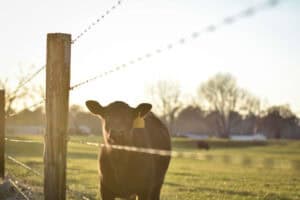
Farmers began creating fences to keep livestock from damaging crops and grasses. Ranchers erected fences to keep sheep and cattle safe from larger predators. Between 1867 and 1874, the U.S. Patent Office processed over 200 patents for various hand-made “spiked fencing types.” In 1874, Joseph F. Glidden emerged victorious from the patent battle with a mechanically produced fencing material, barbed wire, that could be made on a large scale.
The introduction of barbed wire in the 1870s revolutionized cattle fencing, providing an affordable and effective means of enclosing large land areas. It quickly gained popularity among ranchers and farmers who sought to protect
their crops from roaming cattle and delineate property boundaries. The widespread use of barbed wire led to the enclosure movement, which fundamentally changed the landscape of the American West. It marked the end of the open range era, as ranchers began fencing off their land, leading to the decline of long cattle drives and the rise of more controlled, stationary forms of livestock management.
The adoption of barbed wire was not without controversy, and conflicts between large ranching operations and small farmers and homesteaders emerged. This sparked what became known as the “range wars.” In some cases, ranchers would cut the fences of farmers to reassert their cattle’s access to traditional grazing lands, leading to violent confrontations or “fence-cutting wars.” These conflicts were symptomatic of the broader tensions during rapid economic and social change in the American West.
Over time, legal frameworks and government policies evolved to support fencing and private land ownership, solidifying the role of barbed wire and other types of fencing in American agricultural practices. Today, cattle fencing remains a critical component of agricultural infrastructure in the United States, reflecting the historical evolution of land use practices and the ongoing need for effective livestock management.
